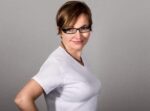As self-published authors, we have the opportunity to bring our stories to audiences around the world, without the potential barriers or limitations of a traditional publishing house. Reaching out beyond your home nation is in your hands, but it doesn’t come without it’s challenges. In today’s Alliance of Independent Authors Blog post, we'll explore the strategies and platforms that can help self-published authors distribute their books worldwide.
Global book distribution for indie authors: leveraging online retail platforms
We can’t talk global distribution without naming the big guys first.
Amazon is of course the global giant in the e-commerce and print book industry, and the majority of self-published authors will utilize Amazon in some way to leverage the global power of their extensive distribution networks. In addition, IngramSpark provides print-on-demand services and global distribution which can make your book available to online retailers, bookstores, and libraries worldwide. If you are keen to know how to use both KDP and IngramSpark at the same time for your global distribution, take a look at this ALLi post for all our advice: Can I use KDP and IngramSpark Together?
While Amazon and other major players have a significant market share, expanding beyond these giants opens up opportunities to tap into niche markets, discover new readerships, and diversify income streams. Self-published authors have a myriad of platforms at their disposal to reach readers worldwide. The key to these options is that they connect you with the sites and shops that supply local readers. And, rather than researching each and every bookstore in the region you're targeting, these providers can supply your book locally for you. New platforms will come and go, but we'll share some top options in today's post.
Five example global distribution platforms
- PublishDrive: is a comprehensive aggregator service that allows authors and publishers to distribute print, audio, and digital books across multiple retailers. They not only distribute to major players like Amazon, Apple Books, and Google Play but also tap into niche markets and regional platforms, describing themselves as offering the ‘widest worldwide distribution network’. With a user-friendly interface, PublishDrive offers analytics and insights that aims to help authors make informed decisions about their distribution strategy. Find out more about the 400 stores & 240K libraries PublishDrive distributes to here: PublishDrive Distribution Services.
- Draft2Digital: distributes via major channels, including Kobo and Amazon of course, and also utilises location specific platforms such as the German Consortium Tolino, and the French-based company, Vivlio. In 2022 Draft2Digital also acquired Smashwords with the benefit of acquiring their distribution channels too. You can find all details of their distribution partners and global locations here: Draft2Digital Global Distribution Partners.
- StreetLib: is another emerging player in the self-publishing arena, providing a wide-reaching distribution network particularly for ebooks and audiobooks. Supporting a global reach, StreetLib connects authors with numerous online stores, libraries, and subscription services. Their platform can also facilitate print-on-demand needs, catering to readers who prefer physical copies. StreetLib distribution routes can be found here: StreetLib Distribution Partners.
- Shopify: for those looking to build their own brand and establish a direct relationship with readers, Shopify offers a solution, providing authors with the tools to set up your own online storefronts. This enables you to sell both physical and digital copies of your books on your own website. This direct-to-consumer approach allows authors to maintain control over pricing, promotions, and customer interactions from your own website rather than selling via other sites. This can be ideal if you have other merchandise to offer. Additionally, Shopify integrates with various fulfilment services, streamlining the process of shipping physical copies to readers around the globe. One watch-out, always check with your accountant to ensure you are managing your tax requirements correctly when utilising Shopify or similar sales tools on your website.
- Kobo: is a major player in the ebook market. With a presence in multiple countries, Kobo provides access to a diverse international audience. Authors can publish their ebooks through the Kobo Writing Life platform, reaching readers not only on Kobo devices but also through partnerships with other retailers. Kobo's global distribution network ensures that authors can connect with readers in particular who prefer alternative platforms to some of the bigger players out there.
Whether you are seeking wide visibility across various retailers or aiming to cultivate a direct relationship with readers, these platforms provide the necessary tools to navigate the global book market. And they aren’t the only ones – always keep your ear to the ground and shout-out to your indie author contacts to find out about new platforms to reach into new markets.
Translation for international book markets

How Authors Sell Publishing Rights Guidebook
Many self-published authors consider translating their books to reach non-English-speaking markets, although it should be noted that this is usually only recommended if you have found significant success in your native language first.
There are two main options to consider; selling translation rights and managing translation yourself. If you are looking to sell translation rights, you’ll want to read up on all the details, and you can do so with How Authors Sell Publishing Rights: ALLi’s Guide to Working with Publishers, Producers and Others from the Alliance of Independent Authors’ Publishing Guides series.
The book has all you need to know and is available in the ALLi Bookstore. Members can enjoy the ebook for free.
If you decide to manage the translation process yourself, there are a range of platforms out there to help. It’s best to find one that both specialises in the language you are translating into, plus has experience in translating the sort of content of your book. The experience from one of our author members, David Penny, is shared below:
Historical novelist, David Penny
I went initially with Babelcube but the service offered was poor, and my translation received a large number of negative reviews and comments. So much so that I paid for a re-edit of the book by a new translator and uploaded that. With translatebooks.com I have a much closer relationship to both Joseph Alexander and his team of translators.
With all translations, unless you have some proficiency in the language being translated into, you are very much in the hands of your translator. Which means you really must choose with care.
You also need to remember all the extras around your book. You must have your blurb translated, the keywords to use for Amazon, your author page on Amazon.de (in my case). There are many small bits that you need to gather so you can present a professional, complete package to the reader.
You can find more details about David’s experience, and other tips for translating your book in this post: Alliance of Independent Authors Ultimate Guide to Book Translation.
Global book marketing opportunities
Beyond translation, localizing your book for different markets can support sales, so you will want to revisit your book cover, marketing materials, and promotional content when approaching a new market. Reworking any of these elements demonstrates a commitment to understanding and respecting the cultural nuances of your target audience, so take a look at local books in your genre to check your work fits in.
Similarly, considering how to speak to audiences in global locations by revisiting your marketing strategies and channels can ensure you are making the most of each location. For example, read up on the names of the local bookstores and websites in your new locality. Ensure your chosen distributer reaches them and that you know what they are called, so that if a new fan is intrigued by your books and asks where they can pick it up, you are familiar with the right bookstore names to direct them straight away.
Local book fairs and literary events provide excellent opportunities to showcase your work on an international stage, as well as gaining insights into the preferences and trends of the regions you are targeting. This knowledge can inform your book cover design, marketing messages, and overall strategy.
International book fairs take place across nations, from the Frankfurt Book Fair to the London Book Fair, New Delhi World Book Fair, or Cairo International Book Fair, but there are many more. These events attract publishers, agents, and readers from around the world, and if you can’t attend in person, there are often ways to catch up online after the main event, including virtual webinars and online discussions. Here you can engage with experts and readers from different regions to better understand the market you are entering.
Globalize your online marketing content
In the interconnected digital world your online content can significantly boost the visibility of your book across the world, no matter where you are aiming to reach. So go back to basics and make sure all of your key information is up to date and optimised for the nations you are reaching out:
- Author Website: ensure that your website is optimized for search engines to improve its discoverability. Include links to purchase your book on various platforms that work in different nations. Take a look at your reviews and quotes on your site – do they represent the different nations you are now communicating with? If not, can you gather some to bring a global feel to your website?
- Social Media Presence: can you leverage social media platforms like Facebook, TikTok, X, Instagram, or LinkedIn to connect with readers globally? Are any of these sites used more in the nations you are now targeting and are there local influencers or authors you should follow or connect to (see below)? You may also be able to target your content to reach specific nations, so take a look at your options when you are posting. Also, ensure you are picking up on local hashtags if they differ by geographic region.
- Book Bloggers and Reviewers: reach out to book bloggers and reviewers who specialize in your genre. Local positive reviews can significantly impact your book's credibility and visibility and they may be excited to discover a global author working in their favourite niche. Send them review copies and encourage them to share their thoughts on their platforms.
- Collaborate with Local Influencers and Authors: beyond reviewers, are there any other local influencers or literary figures who have a strong presence in the target market? Their endorsement can significantly boost your book's credibility and visibility, and by linking back to them you are helping their visibility too. Particularly consider local indie authors who may want to collaborate with you. Engaging with your audience in the new market you are reaching into can build a community around your work.
- Facebook ads: while not for everyone, some find that Facebook (and similar) ads can work well for book sales, and it's worth remembering these can be targeted by location to boost your visibility when selling in to a new geographic target.

Author, Clare Lydon
ALLi Member Clare Lydon says of her targeted Facebook Ad campaign:
My Italian translations had sold pretty well. But once I started Facebook Ads, sales went up 30x the following month. Of course, that calmed down after a while, but sales are still far better than they were. That wouldn't have happened without Facebook ads.
Keep learning and adapting
Distributing your book globally is an ongoing process that requires continuous monitoring and optimization.
By regularly analyzing your sales data and reader feedback you can understand which regions are responding positively to your book. Use this information to refine your marketing strategies and focus your efforts on areas with the highest potential.
Stay flexible and be ready to adapt your marketing strategies based on the changing landscape. Trends, preferences, and market dynamics can evolve, so be prepared to pivot when necessary.
Conclusion
The ability to distribute books globally is within reach for every aspiring author. By leveraging a range of retail platforms, cultivating local relationships, and potentially exploring translation options, self-published authors can make the most of global distribution opportunities.
Find out more
 Take a look across your author content to update your SEO for 2024, with new tips from this blog post: Improve Your Author Website with SEO Updates for 2024: Six Easy Tips
Take a look across your author content to update your SEO for 2024, with new tips from this blog post: Improve Your Author Website with SEO Updates for 2024: Six Easy Tips
Read up on all things distribution with this ultimate guide to distribution from ALLI as part of a series of posts exploring the seven process of publishing: The Seven Processes of Publishing: Distribution








I think it’s vital that self-published authors explore every option for their books, which includes global book markets via expanded distribution options. Many of my clients are unaware that they can self-publish their books on multiple platforms at the same time, for example, Amazon KDP, IngramSpark, or Draft2Digital.
If you’re going to make a large investment in your book or career as an author, taking the time to thoroughly research all platforms and explore multiple markets is vital if you want to create the biggest chance of success for your book.